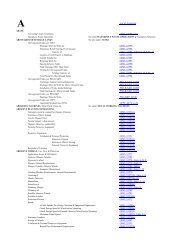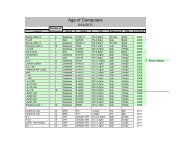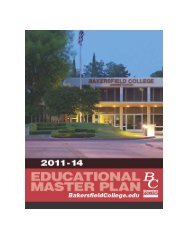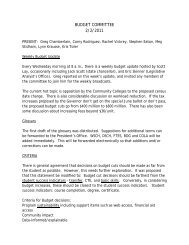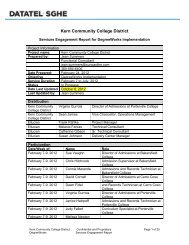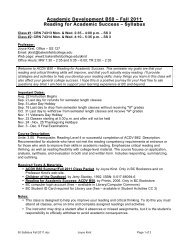Addendum with evidence (8.2 MB) - Accreditation - Bakersfield ...
Addendum with evidence (8.2 MB) - Accreditation - Bakersfield ...
Addendum with evidence (8.2 MB) - Accreditation - Bakersfield ...
Create successful ePaper yourself
Turn your PDF publications into a flip-book with our unique Google optimized e-Paper software.
The enactment of the Student Transfer Achievement Reform (STAR) Act (aka SB 1440)<br />
provided the College <strong>with</strong> an opportunity to “retool” some of its current transfer-oriented programs,<br />
and to introduce new ones. The legislation requires a community college district to grant an<br />
associate degree for transfer to any student in his/her field of study once the student has met degree<br />
and transfer requirements for a particular major. Upon completion of the transfer associate degree,<br />
the student is eligible to transfer, <strong>with</strong> junior standing, into a local California State University (CSU)<br />
campus. Students will be given priority when applying to a particular program that is similar to<br />
his/her community college field of study. The bill prohibits a community college district or campus<br />
from adding local course requirements in addition to requirements of the STAR Act, and prohibits<br />
the CSU from requiring a transferring student to repeat courses similar to those taken at the<br />
community college that counted toward their associate degree for transfer.<br />
The statewide strategy to implement the STAR Act is to develop transfer model curriculums<br />
(TMC) through inter-segmental faculty dialogue using the structure of the course identification<br />
numbering system (C-ID) as much as possible so that common course descriptions will be used as<br />
curriculum building blocks. The initial focus of the project is on the 20 most popular transfer majors<br />
<strong>with</strong>in the CSU. The goal is to develop a model curriculum that all community colleges could adopt<br />
for each major. Sixteen TMCs have been completed since the law was enacted. Another group of<br />
five model curriculums is almost finalized. <strong>Bakersfield</strong> College presently has the authority to offer<br />
fourteen programs of study that might align <strong>with</strong> the currently approved TMCs. During academic<br />
year 2011-12 the curriculum committee at the College is considering some of these other programs<br />
of study as candidates to implement using the approved TMCs.<br />
The College also offers several additional programs that potentially align <strong>with</strong> one of the<br />
established CSU Lower Division Transfer Preparation (LDTP) patterns, but are not yet aligned to a<br />
prospective TMC. 17<br />
A complete analysis of the extent to which current College programs of<br />
instruction align <strong>with</strong> the TMCs and the 42 major fields of study included in the LDTP program can<br />
be found in the appendices.<br />
In an effort to identify new program areas that would meet labor market needs in Kern<br />
County, an analysis was completed of the occupations expected to have 20 or more job openings<br />
annually through the year 2018. The list was filtered using the Bureau of Labor Statistics training<br />
level definitions <strong>with</strong> a focus on those occupations requiring a Bachelor’s or Associate Degree, some<br />
post-secondary vocational education, or long-term on-the-job-training of more than twelve months<br />
(either of which might culminate in a certificate). Those occupations that qualified were mapped<br />
through the Standard Occupational Classification (SOC) codes to Associate Degree and Certificate<br />
of Achievement instructional programs offered by the competitor public community colleges<br />
described above. Because the occupations map to one or more Taxonomy of Programs (TOP) code<br />
used by the community college system, there can be multiple programs, even <strong>with</strong>in the same<br />
community college, offered for each occupation. For that reason some of the values in the “Total<br />
CC Programs” column show a count higher than the number of colleges in the study area.<br />
The table below identifies Kern County occupations commonly requiring a college degree.<br />
For each occupation, the EDD has projected 20 or more annual job openings through the year 2018.<br />
An initial course of study for some of these occupations might begin in a community college;<br />
therefore, the transfer degree initiative may benefit instructional programs that lead to those<br />
occupations.<br />
17 Academic Senate for the California Community Colleges, SB1440 Update Retrieved November 19, 2011 from<br />
http://www.asccc.org and California State University System Office, Lower Division Transfer Preparation Retrieved March<br />
30, 2011from http://www.calstate.edu/acadaff/ldtp/agreements<br />
86



